- Disclosure & Privacy Policy
- Work with Me


How To Visit the Tarxien Temples in Malta
by Violeta Matei
Last Updated on: 14th December 2023, 08:03 am
#1 top pick
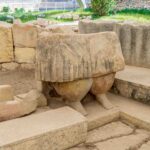
- Tour Malta’s Prehistoric Monuments
- ? Action-packed tour visits three ancient sites: Tarxien Temples, Mnajdra and Hagar Qim Temples
- ? Visit two villages: Marsaxlokk and Wied iz-Zurrieq
- ? Private transportation, air-conditioned vehicle with wifi on board
- ? Map of the islands
- ? Duration: 7 hours
- ? Rating: 5 out of 5 stars (201 reviews)
Check availability and price
Main Topics of How To Visit the Tarxien Temples in Malta
An Exceptional Archeological Wonder
Transport and access for visitors, tarxien temples visiting hours, key sites to see on the temple grounds, rules for responsible visiting.
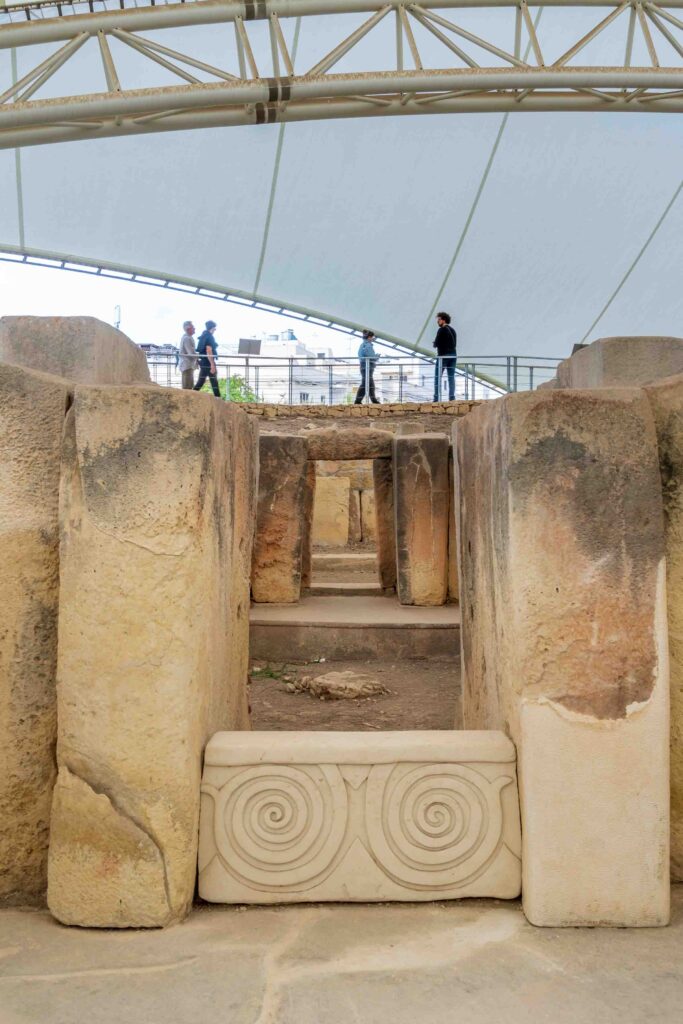
The Hal Tarxien Prehistoric Complex is now protected by a canopy, as its original roofing no longer exists
Unlocking the Mysteries of the Tarxien Temples in Malta
The megalithic Tarxien Temples in Malta are considered one of the oldest free-standing stone structural complexes in the world. Dating back 5,500 years between 3600 BC and 2500 BC, the two interconnected temples provide remarkable insights into the prehistoric culture that constructed these elaborate stone-cut architectures.
Don’t miss a chance to take a glimpse into our prehistoric past on the Mediterranean island of Malta!
This article shares everything you need to know to plan your visit to the Hal Tarxien Temples like a travel professional. While here, check out my roundup article of the best things to see in Malta .
As a UNESCO World Heritage Site and prominent tourist destination, the Tarxien Temples should be on every visitor’s Maltese sightseeing list for an intriguing glimpse into Malta’s Neolithic heritage.
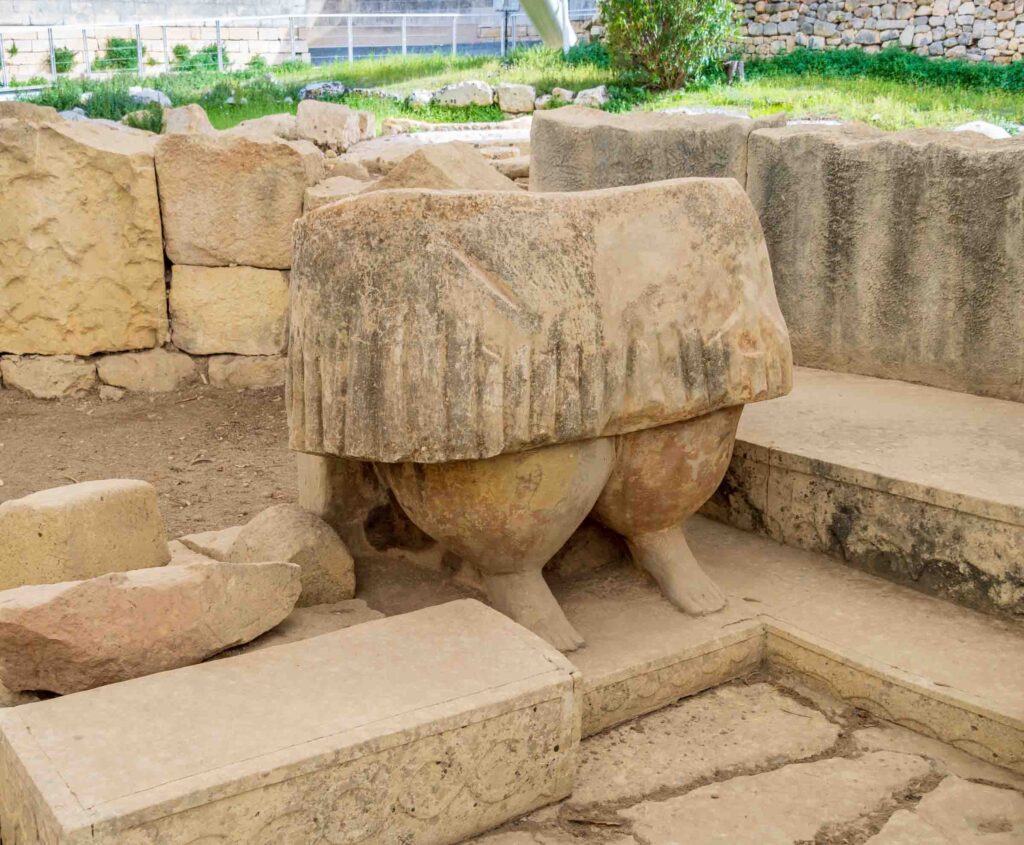
Tarxien Temples detail – Here’s the ‘fat lady of Malta’ considered to be a fertility figure (because of its curvy shape) – this figure was found inside the Western Temple
The Tarxien Temple site contains two temples intricately carved from stone in the unique form of Maltese megalithic architecture. It is one of the most complex and developed existing temple groups found in Malta.
The impressive surviving remains feature rich decorative stone relief carvings of spirals, plants, domestic animals, and other intricate designs that would have required highly skilled craftsmanship using the most basic of Bronze Age tools. Over 35 carved limestone statues and relief slabs were also discovered, suggesting the temples’ use in fertility rites and worship.
As one of only six Megalithic Temple sites inscribed on the prestigious UNESCO World Heritage list, the immense historical value of the Tarxien Temples cannot be overstated for such a small Mediterranean country. The temples stand today as a hallmark and definitive representation of the pinnacle achievements of temple art and construction in Prehistoric Malta.
Read my article about the Ggantija Temples on Gozo , Malta’s little sister island. I highly recommend you to visit Tarxien first, then go to Ggantija, where you can also find a neat archaeological museum. Tarxien also has a museum, but it is smaller than the one at Ggantija.
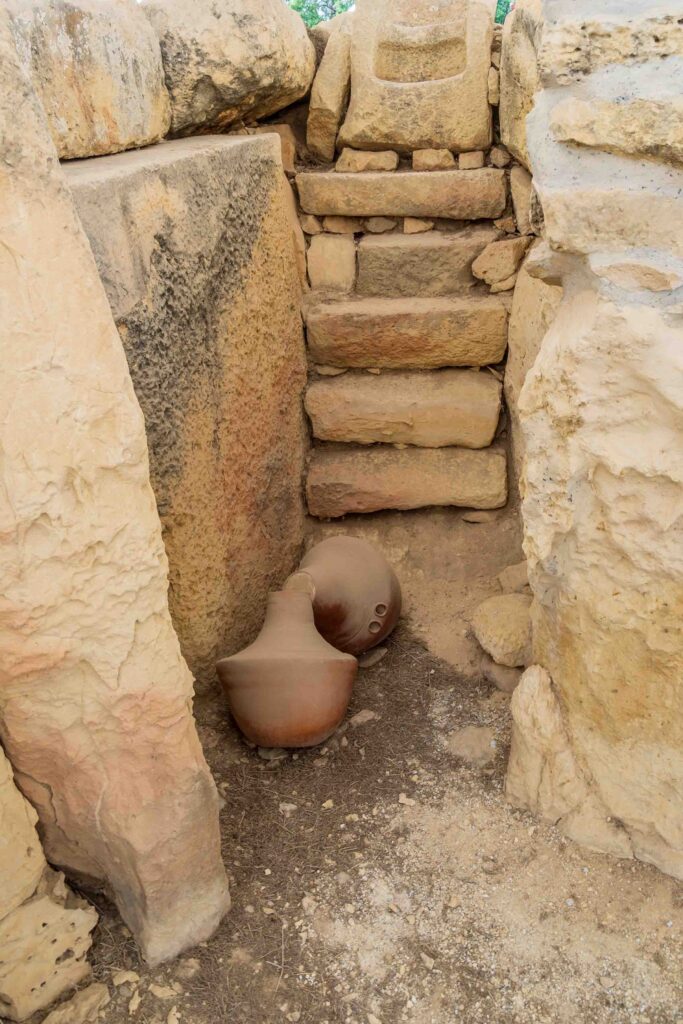
Prehistoric amphora in the Tarxien Temples
The Tarxien Temples site is conveniently located in the town of Tarxien in the South Eastern Region of Malta, only a short drive from the capital Valletta. There is ample parking around the temple grounds for those driving themselves.
The site is also accessible by Malta’s extensive public bus system, with multiple buses running the route directly to Tarxien town regularly each day. Private transfers from your Malta hotel to the temples are another transportation option.
With easy access from most areas around Malta, the impressive Tarxien Temples should be on every visitor’s must-see itinerary while on the island.
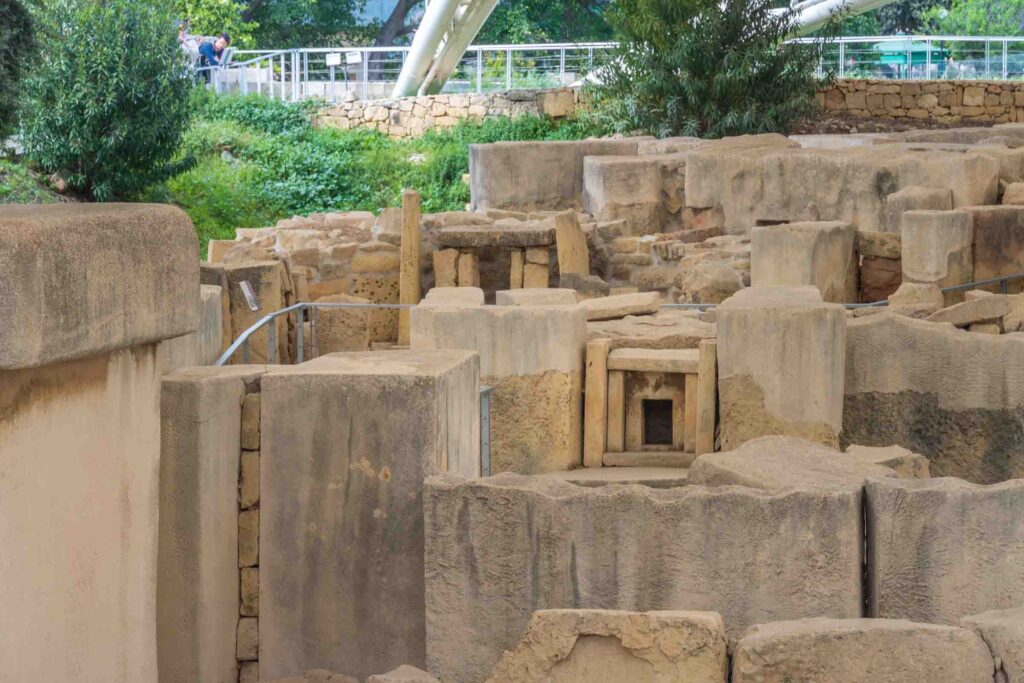
Some of the structures inside the Tarxien temples are very nicely preserved
The Tarxien Temples are open daily for visitors between 9 AM to 5 PM, with last admission at 4:30 PM.
It is recommended to arrive earlier in the day to avoid larger tour groups and afternoon heat during the summer.
Peak days tend to be Wednesdays when many local students visit and weekends when more leisure tourists come. Early morning hours on other days tend to see smaller crowds to enjoy the complex at a more relaxed pace before bigger groups arrive.
No advance booking is required for general admission tickets purchased on-site. Guided group tours can be booked ahead online from certain Malta tour providers for more in-depth explanations if desired.
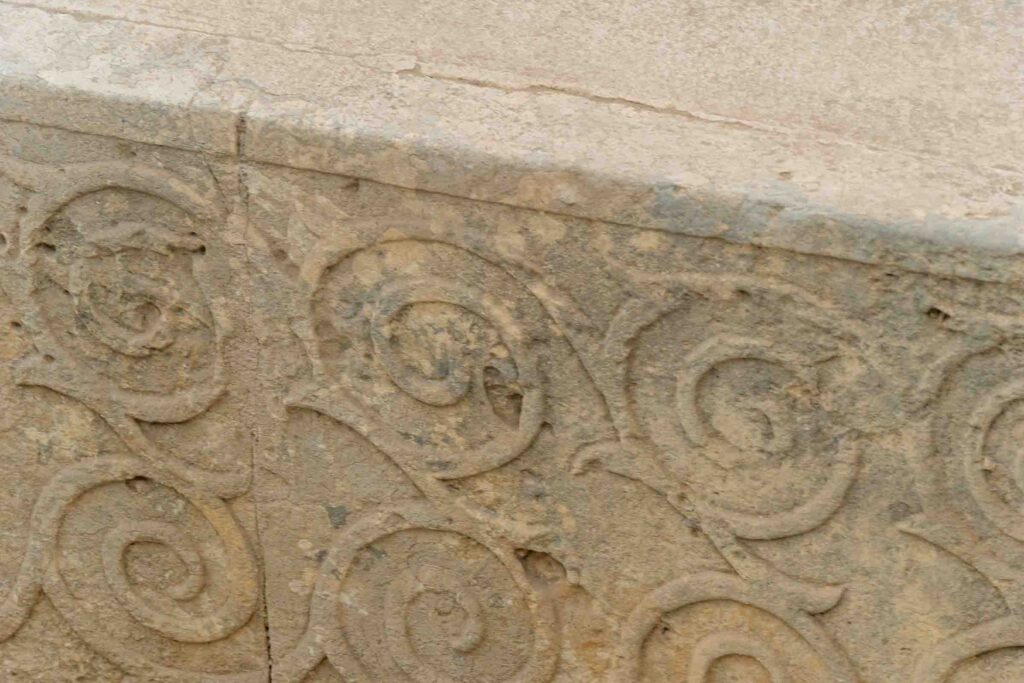
The spiral carvings could be a graphical representation of waves
The South Temple, constructed between 3600 BC and 3200 BC, is the largest and most ornate of the two temple structures. The multiple rooms contain exquisitely preserved spiral carvings, animal reliefs, and niche decorations. Don’t miss the Owl Room considered one of the most intricate interiors.
The Central Temple, built around 3000 BC, connects to the South Temple through a middle doorway. Look for the altar slab with horns and sacrificial offering indentations and the relief sculpture of two bulls.
The site museum houses the most significant recovered temple artifacts like the iconic Maltese Fat Lady figurines believed to represent fertility goddesses.
Allow about 30 minutes to one hours to fully walk through and visually explore the expansive temple grounds and museum collection for a glimpse into the rituals and lifestyles of ancient Maltese temple builders.
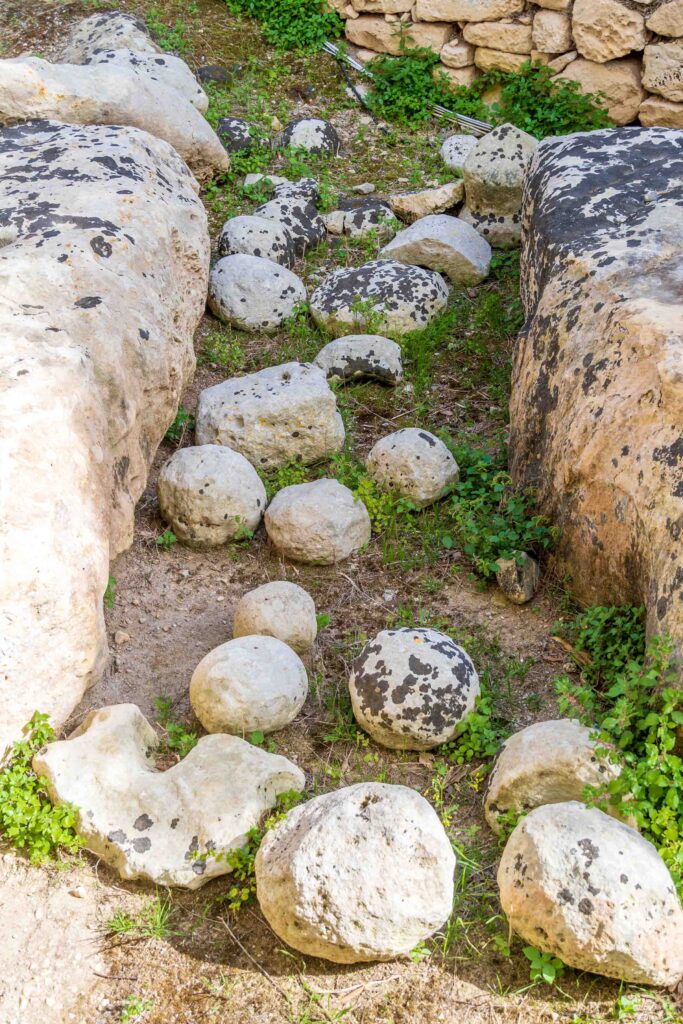
Rounded boulders served as prehistoric “wheels” for the workers to move stone slabs around the construction site – I guess they left their tools behind once the job had been done
As an actively preserved archeological site, visitors to the Tarxien Temples are required to follow some rules to minimize any damage over time with thousands of yearly visitors.
Do NOT touch any temple walls or carvings. Oils from human hands can slowly degrade the intricate carvings. Photography without flash is allowed and encouraged to capture your visit.
Dress appropriately without excessively revealing clothing to respect local cultural norms. Sturdy shoes should be worn as well for the uneven stone temple floors.
Visitors are asked to speak in hushed voices inside the temple interiors out of respect for other visitors and to maintain the sense of history. Guide your children not to run around delicate areas.
By following these simple site rules, visitors to the temples can responsibly enjoy and help conserve Malta’s incredible prehistoric legacy at Tarxien for future generations.
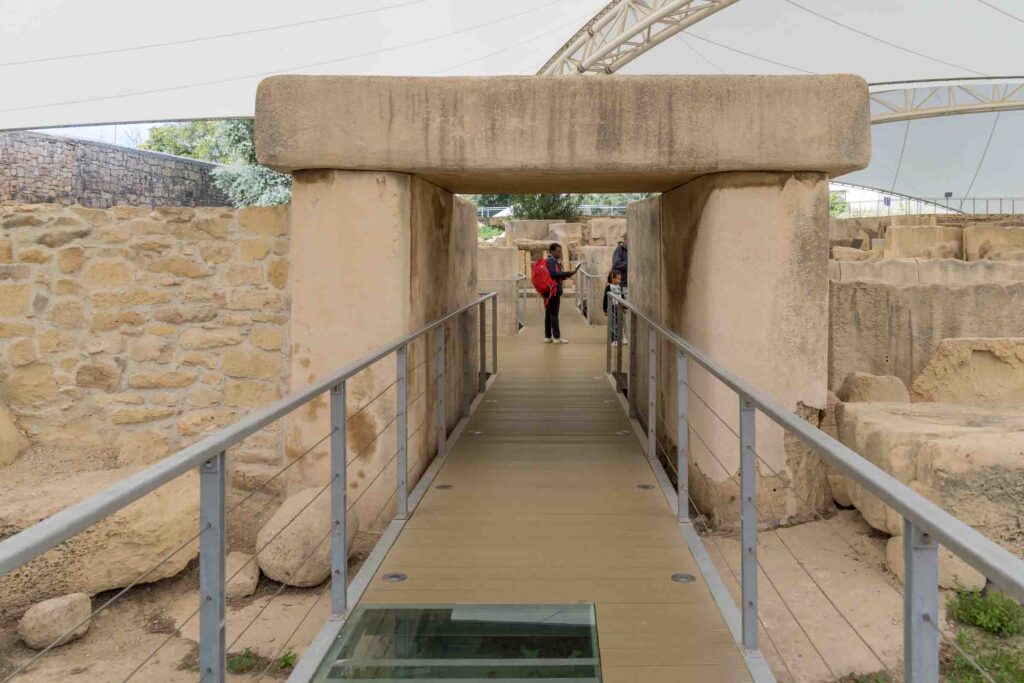
There’s a visitor deck leading you through the remains of Tarxien temples, so you won’t have to step on the prehistoric stones
The Tarxien Temples stand as one of the most significant and well-preserved cases of cultural heritage from the mysterious Temple Period of Maltese history roughly 5,500 years ago.
Remember to add this landmark to your Malta bucket list! You’ll be glad you’ve don it!
- Recent Posts
- Beach Captions for Instagram - July 4, 2024
- Summer Beach Wallpaper Photos - June 27, 2024
- Where To Stay in Paris - June 25, 2024
If you liked this article, click here to join my community of readers: Subscribe
About Violeta

Latest Articles
- Beach Captions for Instagram
- Summer Beach Wallpaper Photos
As an Amazon Associate I earn from qualifying purchases.
- About Heritage Malta
Accessibility
- Annual Reports
- Departments Directory
- Leaflets and Brochures
- Meet the Team
- View all Subsidiaries
- Diagnostic Science Laboratories
- Exclusive Venues
- Merchandising, Publications and eBooks
- Taste History
- Conservation
- Digitisation
- Education & Outreach
- Exhibitions
- IT Department
- The Technology and Experience Development Unit
- Publishing and Didactic Resources
- Underwater Cultural Heritage Unit
- Become a Member
- Opening Hours
Ħal Tarxien Prehistoric Complex
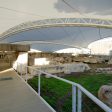
The lower part of a colossal statue of a figure wearing a pleated skirt stands sentinel to the dawn of civilization in the highly decorated South Temple within the Tarxien Neolithic Complex site. Discovered in 1913 by farmer Lorenzo Despott, the site consists of a complex of four megalithic structures built in the late Neolithic and then readapted for use during the Early Bronze Age . Only the lower part of the walls survives in the easternmost structure, the oldest part of the complex. However, it is still possible to see its concave façade and five chambers. The extensive archaeological excavations undertaken between 1915 and 1919 were led by Sir Themistocles Zammit, Director of Museums at the time. The South structure is rich in prehistoric art, including bas-relief sculpture depicting spirals and animals. The domesticated animals depicted include goats, bulls, pigs, and a ram. The large number of animal bones discovered in this complex, most of which were found in specific areas, indicates the importance these animals played at the time. The eastern building follows the traditional design of these megalithic structures, with a central corridor flanked by a semi-circular chamber on each site. Evidence of arched roofin g in the unique six-apsed Central Structure, the last of the four to be built, helps visitors imagine how these temples might have looked when covered. Passages between different areas of the complex are sometimes blocked by physical barriers, suggesting that parts of these buildings were accessible to only a part of the community. A large hearth in the corridor between the first apses and a smaller one in the corridor between the second pair of apses of the central structure are evidence of the use of fire within. Although we know little of what took place within these buildings, evidence suggests that they were important structures central to the lives of the Neolithic inhabitants of the island. In the early Bronze Age (after 2,000 B.C.), new arrivals to the islands turned some areas within the site into a cremation cemetery, leaving a rich record of customs and objects.

The Management Plan for the Megalithic Temples of Malta provides a framework for decisions about the conservation, management, and enjoyment of the six sites inscribed on the World Heritage List.
Archaeological Remains, Site
Click link below for opening hours:
Ħal Tarxien Prehistoric Complex, Ħal Tarxien, Malta
Adults (18+): €6.00
Youths (12-17): €4.50
Senior Citizens (60+): €4.50
Concessions & Students: €4.50
Children (6-11): €3.00
Infants (1-5): Free
Heritage Malta Members: FREE
Heritage Malta Passport Holders: FREE
This site meets the following accessibility requirements:
Mobility Impairment
Guided Tour
Interested in experiencing this site aided by a guided tour from one of talented tour guides?
Virtual Experience
Getting Here
Ħal Tarxien Prehistoric Complex,
Triq It-Tempji Neolitici,
Ħal Tarxien,
Public Transport
The closest bus stop is 5 minutes on foot. Interested in getting here by public transport?
Request A Guided Tour
Thank you for your interest. Please complete the form below and we’ll look to get back to you as soon as possible.
This site is protected by reCAPTCHA and the Google Privacy Policy and Terms of Service apply.
Frequently Asked Questions
Answers to the most common questions about Ħal Tarxien Prehistoric Complex.
What was happened to the original finds retrived on-site?
The National Museum of Archaeology in Valletta houses the most vulnerable discoveries which were removed from Ħal Tarxien Prehistoric Complex for conservation purposes.
Is the complex wheelchair accessible?
The complex has a dedicated walkway which is fully wheelchair accessible.
Featured Museums & Sites
Ħaġar Qim and Mnajdra Archaeological Park
Tas-Silġ Archaeological Complex
Ġgantija Archaeological Park
Kordin III Megalithic Site
Active Itinerary
Join our community to use our interactive maps to plan your own itinerary and get tips and suggestions from those who have already visited.
Quick SEARCH
Your itineraries, your bookmarks, your bucketlist, already been there, your favorites, quick share, itinerary settings.
Browse your current notes. You can have notes attached to your itinerary, a specific location in your list or a specific page.
Your current itinerary settings and options.
Interactive maps are a premium feature and only available for certain account types. Free during the beta phase …
Choose your active itinerary or create a new one. Depending on your account type, you are limited to only one list. Fill your list, move or drag and drop items between them.
As a premium member, you will have private and public lists, as well as default core lists (favorites, bookmarks, already been there, bucket list).
Collection of the content you enjoyed the most. Favorites are shared publicaly. Use Bookmarks for private storage.
Share your current itinerary: With friends and family via email, to Twitter, to Facebook or pin it on Pinterest.
Decide, if the active itinerary is public or private.
Your bucketlist, go ahead and add some POIs!
Bookmark content, that you want to keep as reference and for easy access.
Quickly search through your locations / notes ….
Places you have already visited and like to share.
Change NOTES
RECEIVER …
Lorem ipsum dolor sit amet, consectetur adipiscing elit. Ut elit tellus, luctus nec ullamcorper mattis, pulvinar dapibus leo.
YOUR PROFILE
Current announcements, quick contact, website settings.

Quickly change some main profile and account settings.
Quickly change some website settings.
Get in touch!
Latest news and changes ….

10 Tips for Visiting the Megalithic Temples in Malta & Gozo
Partway between mainland Europe and Africa in the Mediterranean Sea lies the small island of Malta and its even smaller neighbour Gozo. These islands are best known for their megalithic temples built by Neolithic inhabitants some 5 – 6,000 years ago. The temples are a testament to a tradition of prehistoric architecture that is totally unique to this part of the world. Recognising their international importance, UNESCO classified six of them as a World Heritage Site. Not surprising then the temples are a popular tourist attraction. Having recently visited the islands, these are my tips for visiting megalithic temples on Malta and Gozo.
Ethan Doyle White
- Last Checked and/or Updated 3 March 2024
- No Comments
- Malta & Gozo , Malta & Gozo Travel Tips , Travel Tips
The megalithic temples on Malta and Gozo were made using large limestone blocks, hence the label ‘megalithic’ – large stone. Typically they have circular features that have been called ‘apses’ and are often found to have contained carved female figurines. Eager to see these enigmatic ancient structures for myself, I visited the islands during November, a time of year which avoids the crowds, sweltering heat, and heightened prices of peak tourist season.
At the same time, the Mediterranean climate ensures that the autumnal weather is mild and for several hours a day I needed only a light jumper. Although Malta is a great place for archaeological explorers, particularly those interested in prehistory and ancient religion, one thing I soon realised was how important it is for visitors to plan ahead so that they make the most out of their adventures. Here then are my top ten tips for visiting the Megalithic temples on Malta and Gozo.

What Shouldn’t I Miss?
Over the centuries, archaeologists have discovered at least twenty megalithic temples on Malta and Gozo. Unfortunately many are not open to visitors, but the six that make up the UNESCO World Heritage Site are. No keen prehistorian can visit Malta without seeing these at least.

By far the best-known temples are Mnajdra and Ħaġar Qim, perched within 500 metres of each other on Malta’s south-eastern coastline. Built from limestone, both temples have suffered from weathering since archaeologists excavated them in the 19th century. To prevent further destruction, large protective tents now cover both sites, while a visitor’s centre exhibits a small collection of the artefacts discovered there. Within walking distance of the temples are the Misqa Tanks, potentially prehistoric water storage tanks carved into the natural rock, as well as the Ħamrija Tower built for defence in the 17th century (Read More About the Coastal Towers of Malta & Gozo ).
Back in the more urbanised eastern side of Malta is the Tarxien Temple, a complex of Neolithic buildings that were later used as a Bronze Age cemetery. Like Mnajdra and Ħaġar Qim, a large protective tent now encloses them to prevent any further destruction from the Mediterranean elements. A short walking distance from the Tarxien Temples is the Ħal-Saflieni Hypogeum, a subterranean rock-hewn cemetery complex discovered in the early 20th century. Although considered separate from the megalithic temples themselves, since 1980 it has been classed as a UNESCO World Heritage Site in its own right.
Heading to the north of the island, one can find the Ta’ Ħaġrat and Skorba temples. The former is in the town of Mġarr and the latter in the nearby village of Żebbiegħ. Although not as impressive as temples like Tarxien and Mnajdra, both sites are highly recommended. Neither currently have a protective tent, and therefore offer a sensory experience of the sites as they exist in their fully outdoor environment.

In Gozo, the Ġgantija temples are among the most impressive of all those on the Maltese islands. Here, two temples stand side by side, encircled by the same megalithic wall and overlooking Nuffara Hill, home to a Bronze Age settlement. Like the temples at Skorba and Ta’ Ħaġrat, the Ġgantija temples are still open-air, although the overall impression is hindered slightly by scaffolding and metal girders holding parts of the temple in place.
What About the Museums?
As well as the temples themselves, the Maltese islands boast several museums containing artefacts found during site excavations. In several cases, the two are linked: with impressive modern exhibits on display at Ġgantija as well as the Mnajdra and Ħaġar Qim visitor’s centre. The latter even includes a brief interactive cinema experience taking the viewer through thousands of years of history.

Definitely worth a visit is the National Museum of Archaeology in Valetta. Although some of the rooms and labels are a bit dated and tatty, the museum’s collection of prehistoric artefacts is among the finest in Europe. It includes various engraved and patterned megaliths as well as a fascinating collection of rounded female figurines, including the famous Sleeping Lady sculpture. I recommend visiting this museum before any of the temples themselves, to get a better appreciation for the periods in question. Set aside at least two hours to ensure that you see everything.

When in Gozo, consider popping into the Gozo Museum of Archaeology, a small affair located in the Medieval citadel of the Gozan capital city, which is known as either Victoria or Rabat. Although its prehistoric collection is restricted to a few sparse cabinets, it includes several interesting items excavated from the Ġgantija Temples and Xagħra Stone Circle (the latter sadly closed to the public). For those with an interest in later periods, the rooms devoted to Roman and Medieval archaeology are more likely to impress. The entire museum can be seen in 20 to 30 minutes, and is ideally paired with a wider exploration of Victoria’s Medieval fortifications.
Are There Combination Tickets?
The best option for those wanting to visit all the sites mentioned here might be to buy the Multisite Pass , which costs €50 for adults, €38 for students and retired people, and €25 for children. It remains valid for 30 days from its first use. This allows entry into all the sites mentioned here except the Ħal-Saflieni Hypogeum. In addition, it permits entry to a wide range of other sites of archaeological and historic interest across Malta and Gozo, and gives a 10% discount in Heritage Malta shops. In all the pass gives access to 23 sites and museums. This is a good option for those who intend on visiting not just the temples but other sites as well, particularly if you are staying on the island for two or more weeks.
Those with a more limited time in Malta would be financially better off purchasing individual tickets for specific sites. In those cases where the temples are close to one another, one tickets serves entrance to both sites. The most obvious case of this is at Mnajdra and Ħaġar Qim, which are covered by a single entry-fee. Similarly, only a single ticket is provided for both Skorba and Ta’ Ħaġrat; I should add that the ticket also includes entry to the Ta’ Bistra catacombs, dating from the late Roman period.
When on Gozo, the entry ticket to Ġgantija also permits entry to the nearby Ta’ Kola Windmill, built in the 18th century. Tickets to the Gozo Museum of Archaeology entitle you to entry to the Cittadella Visitor Centre, Gran Castello Historic House, Gozo Nature Museum, and Old Prison. Unfortunately, due to time constraints, I was only able to visit the archaeological museum. Those on a day trip to Gozo from Malta should similarly not expect to include all these sites into their itinerary, particularly if you wish to visit Ġgantija.
Where Should I Stay?
The megalithic temples are scattered across Malta and Gozo, rather than being clustered in any one area. It is therefore impossible to stay in one place that puts you in walking distance of them all, and – unless you hire a car – public transport will be essential.
Malta’s transport hub is on the western outskirts of its capital city, Valetta. Encircled by walls and towers built between the 16th and 19th centuries, this small yet beautiful city is located on the island’s eastern coast. Basing yourself in the west of Valetta or just outside of it places you in the best position to make use of the country’s transport links. I stayed in Floriana, a more rough-and-ready, working-class area to the west of the city, which meant that I had to walk for less than five minutes to the bus stop each morning, an ideal situation for the archaeological explorer.
Being located in either Valetta or Floriana also means that you have access to a wider range of eateries, bars, and shops than are present in most other parts of Malta. It also means that you are in walking distance of the city’s various attractions, which include the National Museum of Archaeology, the 16th-century Saint John’s Co-Cathedral, and the palatial Casa Rocca Piccola. As well as connecting you with transport links to archaeological sites, it also ensures that you are only a thirty minute bus ride away from the night-life hub of St Julian’s, ideal for those wanting to party on a Friday or Saturday night.
Do I Need to Plan Ahead?
One thing I learned (at times to my cost) during my trip to Malta is that it really is important to plan ahead when it comes to visiting the temples. This is particularly the case with Skorba and Ta’ Ħaġrat, which are off the main tourist trail and only open on Tuesdays, Thursdays, and Saturdays. Tickets cannot be purchased at the sites themselves, but must be obtained either online (here for Skorba, and here for Ta’ Ħaġrat) and/or beforehand at the National Museum of Archaeology, which is located on the other side of the island. Those hoping that they will be able to see these two sites without a prior ticket will be disappointed; I saw one man being turned away from Ta’ Ħaġrat by a security guard for arriving without a ticket.
It is also important to make sure that you know exactly where each site is and how to get there. While sites like Mnajdra and Ħaġar Qim are well-signposted and easy to find, the others are not. I would therefore recommend that you make use of a good printed map or online resource like a Google Map, and if using public transport ask the bus driver to let you know what stop to get off at.
What About the Ħal-saflieni Hypogeum?
Perhaps the jewel in the crown of the Maltese megaliths is the Ħal-Saflieni Hypogeum, a subterranean cemetery in Paola. Unfortunately, I never got to see it. To preserve the site, only eighty visitors are allowed in per day, and demand is high. I had hoped to obtain a ticket once I had arrived in Malta, although by that point it was fully booked. Planning again!
Avoid making the same mistake as I did and reserve your slot before travelling to the island! You can book online on the official Heritage Malta website. For peak tourist seasons tickets are booked up well in advance.

How Do I Get to the Temples?
Malta has no railway system and thus sites can only be reached by road. One option is to hire a car, although it might prove difficult to find parking spaces if staying in or around Valetta. Roads are typically small, winding, and (in urban areas) congested, which may put-off some drivers. Sites like Mnajdra/Ħaġar Qim have a car park although others, like Ta’ Ħaġrat, Skorba, and the Tarxien Temples, will require parking in a nearby road.
Another option is to use public buses. This was how I got around most of Malta, and was pleasantly surprised to find that a 7-day pass cost only €21 (€15 for children). This pass could be purchased from the airport or the bus station outside Valetta. From the city, I was able to get buses to every one of the temples on Malta itself and thus it was certainly satisfactory for my needs.
The downside however is that the public buses are unreliable. I found that they rarely arrived at the designated time and often got bogged down in congestion. There were occasions where I had to wait for well over an hour for a bus and the likelihood of delays had to be factored in when planning my itinerary each day.
Another option is to use the Hop On-Hop Off bus service run by a private company. This is the more expensive option, with tickets being €18 for adults (€10 for children) and only remaining valid for one day. It is nevertheless more reliable than the public transport service, with these buses arriving at each stop every 45 minutes. This service is primarily designed for general site-seeing rather than for the narrower pursuit of megalith hunting, although still holds advantages for archaeological explorers. I used the City Sightseeing hop-on hop-off service during my day trip to Gozo , and although it meant following a set route rather than heading straight for Ġgantija, it had the benefit of an accompanying audiotrack informing me of the history of the places we were passing through. I would certainly recommend it for those wanting to see as many historical and natural beauty sites as possible during a day-trip.
Please note: there are a number of hop-on hop-off service on Malta. To choose the best one for you, make sure the sites you want to see are on the itinerary.
City Sightseeing Malta – has the best coverage, in my opinion, with 50 points of interest on two routes. For the temples, the south route includes the Tarxien, Hagar Qim and Mnajdra temples. The service offered by Malta Sightseeing is not as extensive, but it does include the Hypogeum as well as the Hagar Qim & Mnajdra temples, but not the Tarxien temples.
Gozo – there are two services: City Sightseeing Gozo and Gozo Sightseeing . Both stop at the Ggantija temple. The first, the one I used, is the cheapest. And that pass can be combined with a day-return ferry ticket to Gozo from two different ports in Malta (Sliema or Bugibba in St. Paul’s Bay).

As well as using cars or buses, some walking will also be inevitable. From Ħaġar Qim to Mnajdra, for instance, is a 500-metre pathway. This is a smooth and easy walk, although those wishing to branch off the trail to visit nearby sites like the Misqa Tanks and the Ħamrija Tower must be prepared for rockier terrain. The journey from Skorba to Ta’ Ħaġrat takes twenty to thirty minutes by foot, and may be difficult for those with limited mobility.
Getting from Malta to Gozo requires the use of a ferry. This runs from Cirkewwa on Malta’s northern coast to the smaller island, with ferries usually departing every 45 minutes. Ferries taking the opposite journey, from Mgarr in Gozo to Cirkewwa, also run every 45 minutes. A reasonably priced ticket covers both outgoing and return journeys. It is also possible to get a ferry from Sliema or Bugibba in St. Paul’s Bay to Gozo from Malta; a ferry-hop-on hop-off combination ticket is available as a day return .
For the beginning and/or end of your trip to Malta, you may want a private airport transfer to/from your hotel .

Can I Join a Guided Tour?
Most of the sites do not offer guided tours, although an audio-guide is available at Mnajdra and Ħaġar Qim for a small additional fee. Guided tours that are independent of the Heritage Malta are available. As I was travelling on a budget, and I prefer to make my own way around these sites without the restrictions of a guided itinerary, I did not take a guided tour, but there are many available. Guided tours are a good option for those who want to see a few of the main sites, have all their transport requirements taken care of, and have a guided tour of the site.
The Prehistoric Temple of Malta Tour is a 5-hour tour includes the temples of Hagar Qim and Mnajdra, as well as the Ghar Dalam cave & museum and the Hamrija Tower, one of the 13 watchtowers built by the legendary Knights of Malta.
Looking for an all-in day trip to Gozo to see the Ggantija temples – this 9-Hour Gozo Day Trip includes pick up and drop off at your hotel in Malta, return ferry ticket, an itinerary that includes Dwejra, the Citadel of Rabat, as well as the ancient Ggantija Temples.
Where Can I Get Food and Drink?
None of the sites I visited have cafes or restaurants attached, so visitors must look elsewhere for food and drink. So I chose to buy supplies in the shops near where I was staying in Floriana and prepared a packed lunch each morning. That helped me keeping costs down and saved time searching for cafes, which meant I could see more of the archaeology by staying longer at the sites.
Those who prefer a sit-down meal have a few options available to them. Tarxien and the Hypogeum are in an urban area, approximately fifteen minutes’ walk from the main high street at Paola, where various bakeries and cheap food outlets are located. There is also a small, cheap café close to Skorba.
The Mnajdra/Ħaġar Qim visitor’s centre is in a rural environment with few amenities. There is a coffee vending machine, but unless you want a cup of tepid milk I would not recommend it. Those wanting something to eat and/or drink should go to the nearby village of Qrendi or town of Siġġiewi, although I do not have personal experience of either.
In Gozo, the Ġgantija temples are in the urban environment of Xagħra, where several cafes and eateries are found, although few appeared open for lunch when I visited. Greater options are available in Victoria/Rabat, the capital city where the Gozo Museum of Archaeology is located.

Are There Toilets and Gift Shops?
Toilet facilities vary at the different sites. Decent indoor facilities are present at the Mnajdra/Ħaġar Qim visitor’s centre, Ġgantija, and at the Tarxien Temples. There is no facility at Skorba itself, although a public toilet is almost directly adjacent. The only toilet facility at Ta’ Ħaġrat is a portaloo.
Guide books and souvenirs are available for sale at several sites, including the Tarxien Temples, the Mnajdra/Ħaġar Qim Temples, Ġgantija, and the National Museum of Archaeology. The museum’s shop sells excavation reports for those seeking more than just an introductory guide to Malta’s Neolithic heritage. Conversely, there are no gift shops at either Skorba or Ta’ Ħaġrat.
Small figurines, fridge magnets, and other items drawing upon the iconography of Malta’s prehistory are also available in tourist shops situated on the departure side of the island’s only airport.
Archaeology Travel Writer
- Español ( Spanish )
- Français ( French )

- EUROPE: +34 622 657 785
- USA: +1 (352) 458-4954
- USA: +1 (352) 458-4954 EUROPE: +34 622 657 785
- EMAIL: [email protected]
- DESTINATION
Private Tour to the Hypogeum and Tarxien Temples from Any City

Full description
Cancellation policy, user reviews, description of the tour to the hypogeum and temples of tarxien (3-4 hours) from any city.
In Malta there is always something interesting to discover. Therefore, visiting the Maltese archipelago is a very entertaining experience with a great variety of alternatives.
If you want to have a close encounter with the prehistoric history of the island, the tour to the Hypogeum and Temples of Tarxien from any town is the perfect excursion for you to discover the vestiges of the first human civilizations.
It is a walk of approximately 4 hours to visit the only subway temple built during prehistoric times that exists in the world.
The Hypogeum of Hal Saflieni was used between 4000 and 2500 BC by the early inhabitants of the island to honor their deceased. It is also a sanctuary that is wonderfully well preserved.
Also, in the city of Paola you will have the opportunity to visit the temples of Tarxien, a Neolithic-era construction that is still standing.
If you are a lover of prehistoric buildings, you will thoroughly enjoy these architectural wonders, which have been declared a World Heritage Site by UNESCO.
During the tour you will go aboard a comfortable car and accompanied by a private guide , who will be attentive to provide you with all the relevant data of these extraordinary monuments. Also, you will have the return trip guaranteed so that the tour is personalized and very comfortable.
Keep your camera close by to take lots of pictures, as the details of this tour are simply indescribable.
Private Tour to the Hypogeum and Tarxien Temples from Any City | Points of Interest
Take advantage of this great adventure to explore two places that are important worldwide, in this tour to the Hypogeum and the Tarxien Temples.
We will make sure that you fully discover the main attractions of each of these archeological jewels:
The Hypogeum of Hal Saflieni
Discovered by accident in 1902, the Hypogeum of Hal Saflieni is a priceless piece of architecture worldwide.
Many researchers believe that it was an ancient sanctuary for worship and rituals, which later became a necropolis or cemetery.
It is a 3-level structure consisting of different rooms, passages and caves, in which a variety of sculptures were found that today rest in the museum of Valletta. Upon entering, you will observe different chambers, corridors and rooms with an antiquity that ranges between 4000 and 2500 BC.
In the second level, the works that were made in the stone are more elaborate and surprising. Within this level are the Oracle Room and the Well of the Serpent, among other rooms that were used for different activities.
Moreover, historians estimate that thousands of people were buried in the Hypogeum of Hal Saflieni, as thousands of human skeletal remains were found at the site during the first excavations.
It is a very exclusive visit, since only 10 people per hour are allowed to enter the enclosure, and we will take you comfortably to these places.
This is another of the great works discovered by archeologists in Malta. Tarxien is a complex of 4 temples, of which the first one dates from the Ggantija period, so it is observed with some damage to its structure.
The other temples that make up Tarxien belong to the year 3000 and 2500 B.C. Therefore, they are better preserved.
In addition, the 4 structures are connected to each other in a very unique and almost imperceptible way.
Inside the temples there is a cemetery that was used for cremation, as well as a central building with double apses. In addition, on its walls there are some bas-reliefs and friezes with animal drawings.
We know that this will be an unforgettable tour, as you will be able to appreciate up close some real fortresses built by mankind more than 5000 years ago.
Take advantage of your stay in Malta and plan a 4-hour walking tour of Mdina and Rabat to get to know two of the most attractive cities of the archipelago.
English, Spanish, French, the language in Spanish (other languages to consult)
Pick up point
Hotel, airport, cruise port or place of choice
This Private Tour includes:
- Private official tour guide for 4 hours
- Private vehicle with chauffeur for 4 hours
- Meeting point in a central place
- Completely personalized and private experience
- Private Tour
- 24/7 Guardian Angel Service
- Public liability insurance
This Private Tour excludes:
- Food and drinks
- Entrance fees
- No Refund, Modification or Cancellation in any case on any type of tickets or entrance fees.
- Modification of tour/service dates and starting times are subject to availability.
- 48 hours prior to first service date: Free Cancellation on guide and private vehicle with chauffeur. Any type of entrance tickets have no refund.
- Less than 48 hours prior to first service date: No Refund. Payment of 100%.

- New submission For Miami Yachts
- First Name * First Name Last Name
- Your Country * Your country* Afghanistan Albania Algeria American Samoa Andorra Angola Anguilla Antarctica Antigua and Barbuda Argentina Armenia Aruba Australia Austria Azerbaijan Bahamas Bahrain Bangladesh Barbados Belarus Belgium Belize Benin Bermuda Bhutan Bolivia Bonaire, Sint Eustatius and Saba Bosnia and Herzegovina Botswana Bouvet Island Brazil British Indian Ocean Territory Brunei Darrussalam Bulgaria Burkina Faso Burundi Cambodia Cameroon Canada Cape Verde Cayman Islands Central African Republic Chad Chile China Christmas Island Cocos Islands Colombia Comoros Congo, Democratic Republic of the Congo, Republic of the Cook Islands Costa Rica Croatia Cuba Curaçao Cyprus Czech Republic Côte d'Ivoire Denmark Djibouti Dominica Dominican Republic Ecuador Egypt El Salvador Equatorial Guinea Eritrea Estonia Eswatini (Swaziland) Ethiopia Falkland Islands Faroe Islands Fiji Finland France French Guiana French Polynesia French Southern Territories Gabon Gambia Georgia Germany Ghana Gibraltar Greece Greenland Grenada Guadeloupe Guam Guatemala Guernsey Guinea Guinea-Bissau Guyana Haiti Heard and McDonald Islands Holy See Honduras Hong Kong Hungary Iceland India Indonesia Iran Iraq Ireland Isle of Man Israel Italy Jamaica Japan Jersey Jordan Kazakhstan Kenya Kiribati Kuwait Kyrgyzstan Lao People's Democratic Republic Latvia Lebanon Lesotho Liberia Libya Liechtenstein Lithuania Luxembourg Macau Macedonia Madagascar Malawi Malaysia Maldives Mali Malta Marshall Islands Martinique Mauritania Mauritius Mayotte Mexico Micronesia Moldova Monaco Mongolia Montenegro Montserrat Morocco Mozambique Myanmar Namibia Nauru Nepal Netherlands New Caledonia New Zealand Nicaragua Niger Nigeria Niue Norfolk Island North Korea Northern Mariana Islands Norway Oman Pakistan Palau Palestine, State of Panama Papua New Guinea Paraguay Peru Philippines Pitcairn Poland Portugal Puerto Rico Qatar Romania Russia Rwanda Réunion Saint Barthélemy Saint Helena Saint Kitts and Nevis Saint Lucia Saint Martin Saint Pierre and Miquelon Saint Vincent and the Grenadines Samoa San Marino Sao Tome and Principe Saudi Arabia Senegal Serbia Seychelles Sierra Leone Singapore Sint Maarten Slovakia Slovenia Solomon Islands Somalia South Africa South Georgia South Korea South Sudan Spain Sri Lanka Sudan Suriname Svalbard and Jan Mayen Islands Sweden Switzerland Syria Taiwan Tajikistan Tanzania Thailand Timor-Leste Togo Tokelau Tonga Trinidad and Tobago Tunisia Turkey Turkmenistan Turks and Caicos Islands Tuvalu US Minor Outlying Islands Uganda Ukraine United Arab Emirates United Kingdom United States Uruguay Uzbekistan Vanuatu Venezuela Vietnam Virgin Islands, British Virgin Islands, U.S. Wallis and Futuna Western Sahara Yemen Zambia Zimbabwe Åland Islands
- Group size *
- Duration * Duration* 4 hours 6 hours 8 hours
Contact us and a travel expert will respond to you in less than 24 hours
Price per person. Price will depend on the number of people

- Tarxien Temples
- TicketLens: Compare Prices
Guided Tours
General information, opening hours, how to get there.
- Malta Island
- Gozo Island
- Valletta Malta
- Village Feasts 2024
- Things To Do
- Beaches In Malta & Gozo
- Tours In Malta
- Events On The Island
- Malta UNESCO Sites
- Getting To Malta
- Getting Around Malta
- Where To Stay
- Weather In Malta
- Photos Of Malta
- What's New!
- Megalithic Temples of Malta
Planning To Travel To Sicily? Book Your Ferry Tickets Now!
top 6 Megalithic Temples Of Malta
Discover the six sites that take you back in time.
The Megalithic temples of Malta are the evidence to the origins of the first inhabitants of the Maltese Archipelago.
Before you embark on your holiday to Malta, there are a few things you can learn about what happened many centuries ago.
We will help you prepare for your holiday, satisfy your curiosity and make your trip unforgettable.
Seven megalithic temples are located on the islands of Malta and Gozo , each with its own individual refinement. All of these temples have been acknowledged by the UNESCO World Heritage Site as being unique architectural masterpieces given the limited resources available to their builders.
the top 6 megalithic temples of malta
- Hagar Qim Temples
- Mnajdra Temples
- Tarxien Temples
- Ggantija Temples
- Skorba Temples
- Ta' Hagrat Temples
Disclaimer: On our website, you will find affiliate links from which we receive a small commission.


1. Hagar Qim Temples
Date 3600 – 3200 bc.
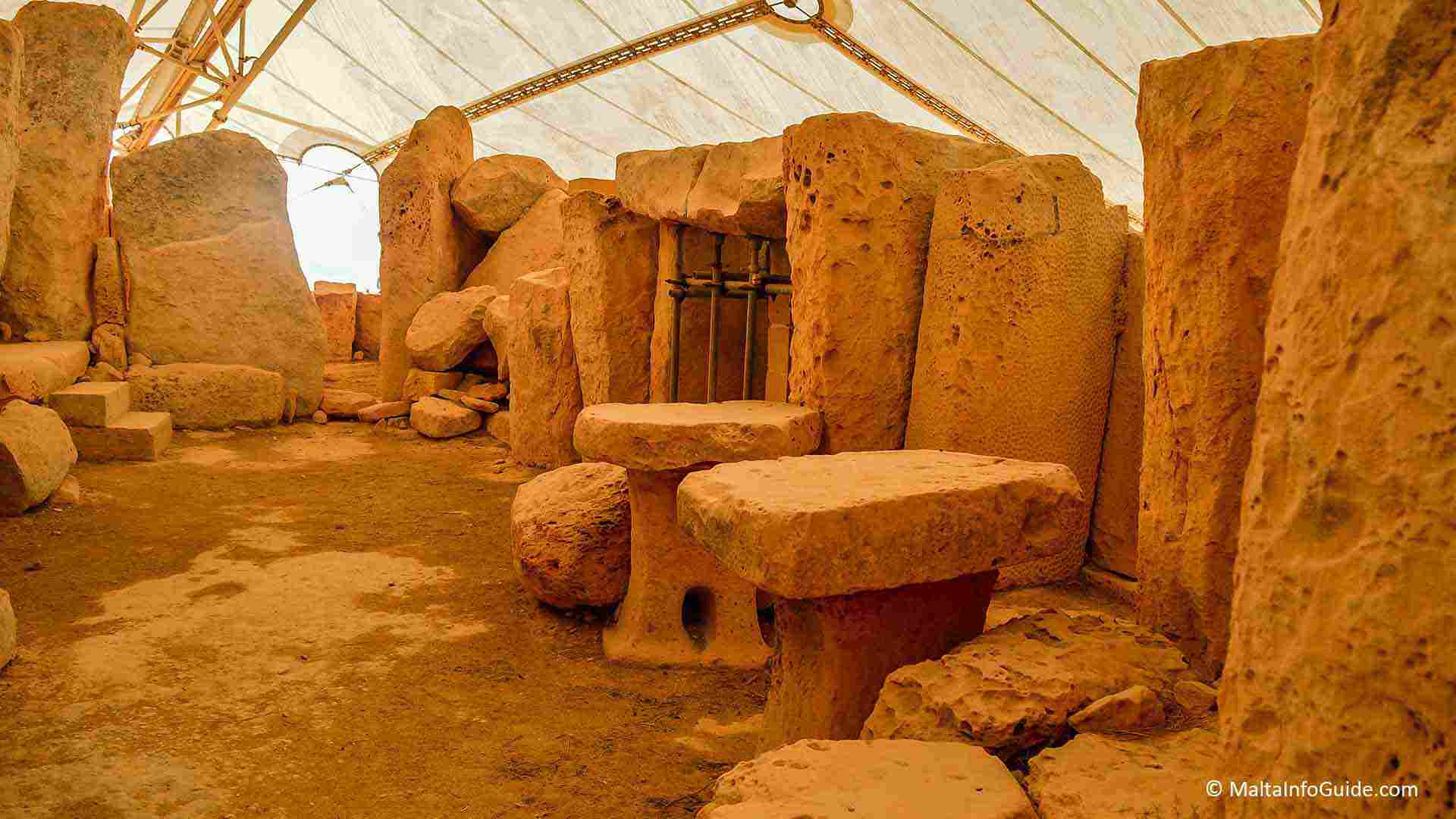
Did you ever here about the equinoxes and solstices? The builders of Hagar Qim temples were so intelligent as being able to align the temples with the first rays of the rising sun.
The south temple is astronomically aligned. You can experience this phenomena on site but you have to be in Malta on specific dates as it only happen four times a year, at least you can visit any day during the year and just be there to think what incredible buildings and astronomers these people were. At the visitors centre you can get an insight through a model of how it takes place.
They are today protected by a permanent tent which also protects you from the sun or rain while visiting. The builders were surely intelligent enough to choose such an unparalleled location on top of a cliff with great views of the open sea and just in front a small island called Filfla.
facts about hagar qim temples
- They are very well preserved ruins.
- These temples were built from soft globigerina limestone.
- The World Heritage Sites committee described the sites as an incredible architectural gem.
- Indications that the temples were covered.
- The name of Hagar Qim means standing/worshipping stones.
- Unrivalled location at the top of a cliff facing the sea with the island of Filfla in front.
- A protective tent was installed during 2009 to protect them from the elements.
2. Mnajdra Temples
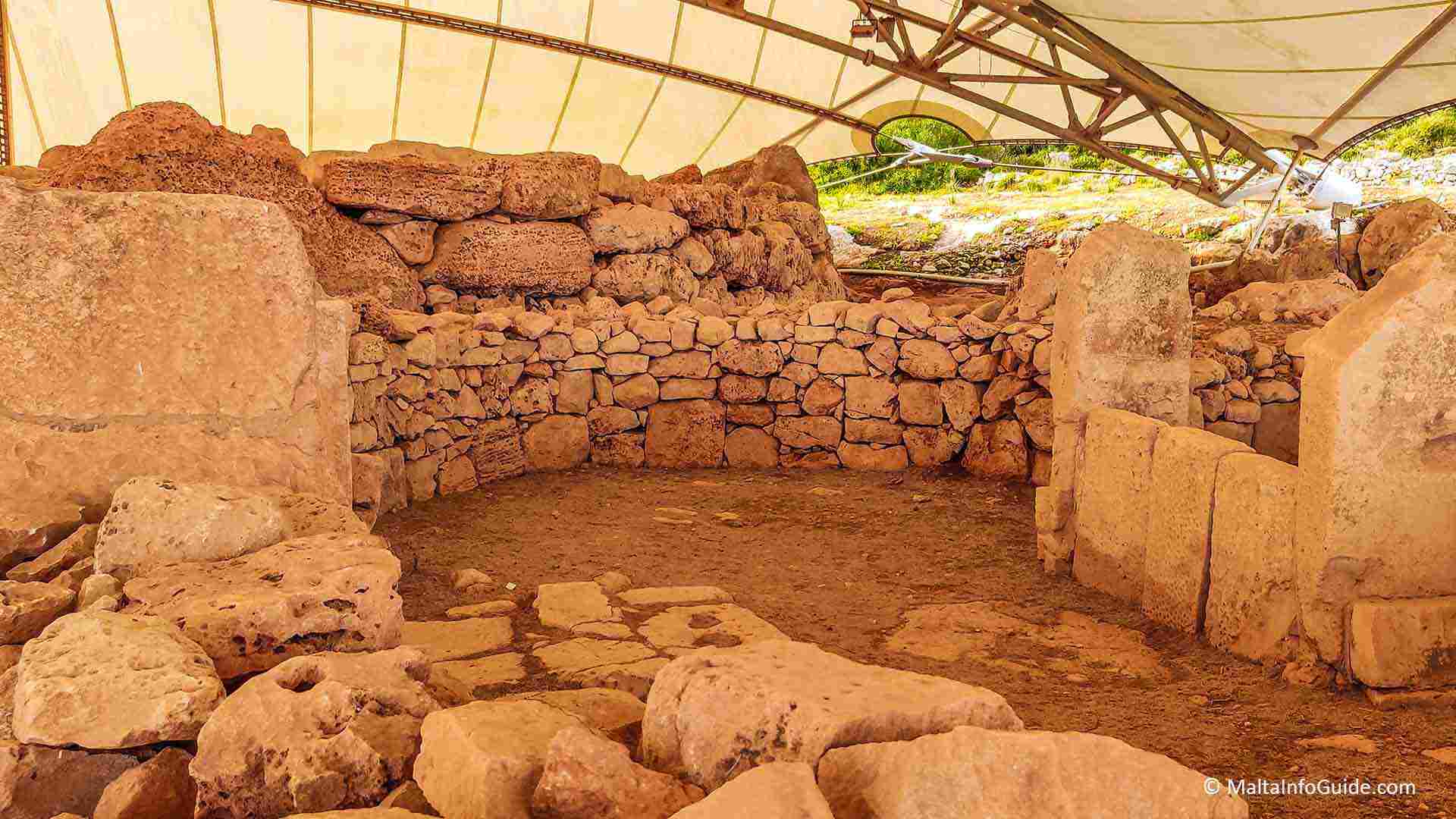
Visiting Mnajdra temples and further down the Hagar Qim temples is a perfect place for a walk in the countryside overlooking the sea. Located on top of a high cliff with a sharp fall down to sea level and a view of Filfla island. How intelligent these people where to choose these locations.
Built around the fourth millennium BC, they are among the oldest on the earth. It consists of three religious temple sites, combined but not connected: the upper, middle, and lower. Built from coralline limestone which is a much harder stone to cut and form than the globigerina limestone used for its neighbouring temple.
It lies very close to the famous Blue grotto caves.
facts about mnajdra temples
- The World Heritage Sites committee characterised the sites as exceptional architectural treasures.
- A protective tent was installed during 2009.
- These temples were built form coraline limestone but Hagar Qim was built by a softer stone called soft globigerina limestone.
3. Tarxien Temples
Date 3000 – 2500 bc.
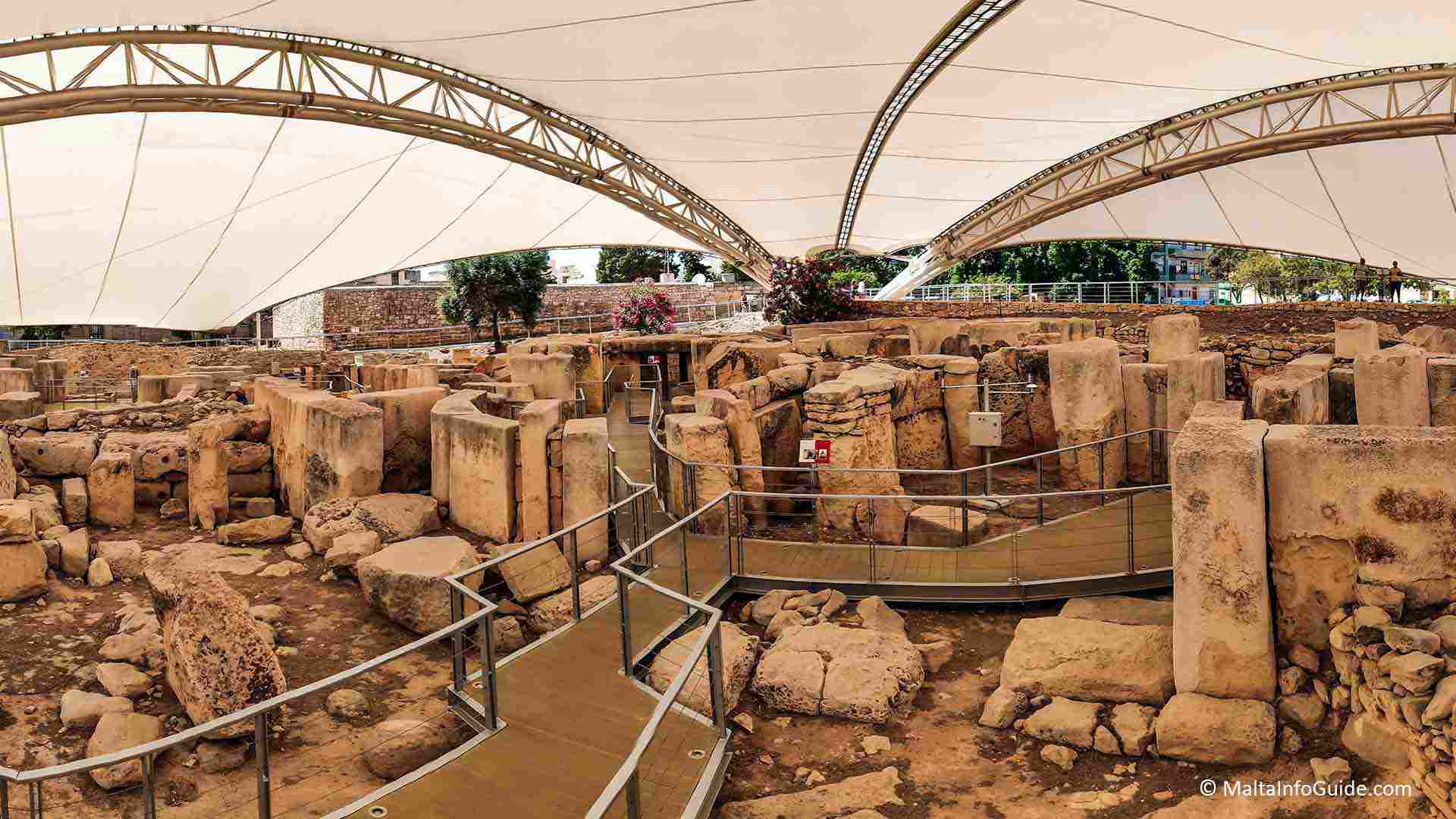
If you love activity and adventure Tarxien temples is surely one of them. Several megalithic temples can be visited in Malta. It is the largest of all the temples with four defined temples all beside each other.
Here you find the unique and famous "fat lady" statue representing a mother goddess, only the lower half was found during excavations and the original and various unique sculptures are indoors at the Malta Archaeological Museum at Valletta. These decorative features are very unique and it is an opportunity to visit them on locations to appreciate a showcase of prehistoric art within the context of the temples.
Found in 1913 by farmers while plowing their fields, these findings further consolidated the survival of a prosperous ancient community which lived on the islands.
other facts about malta tarxien temples
- In 2015 a tent covering the whole site was erected in order to protect the temples from the elements.
4. Ggantija Temples
Date 3600 – 3000 bc.
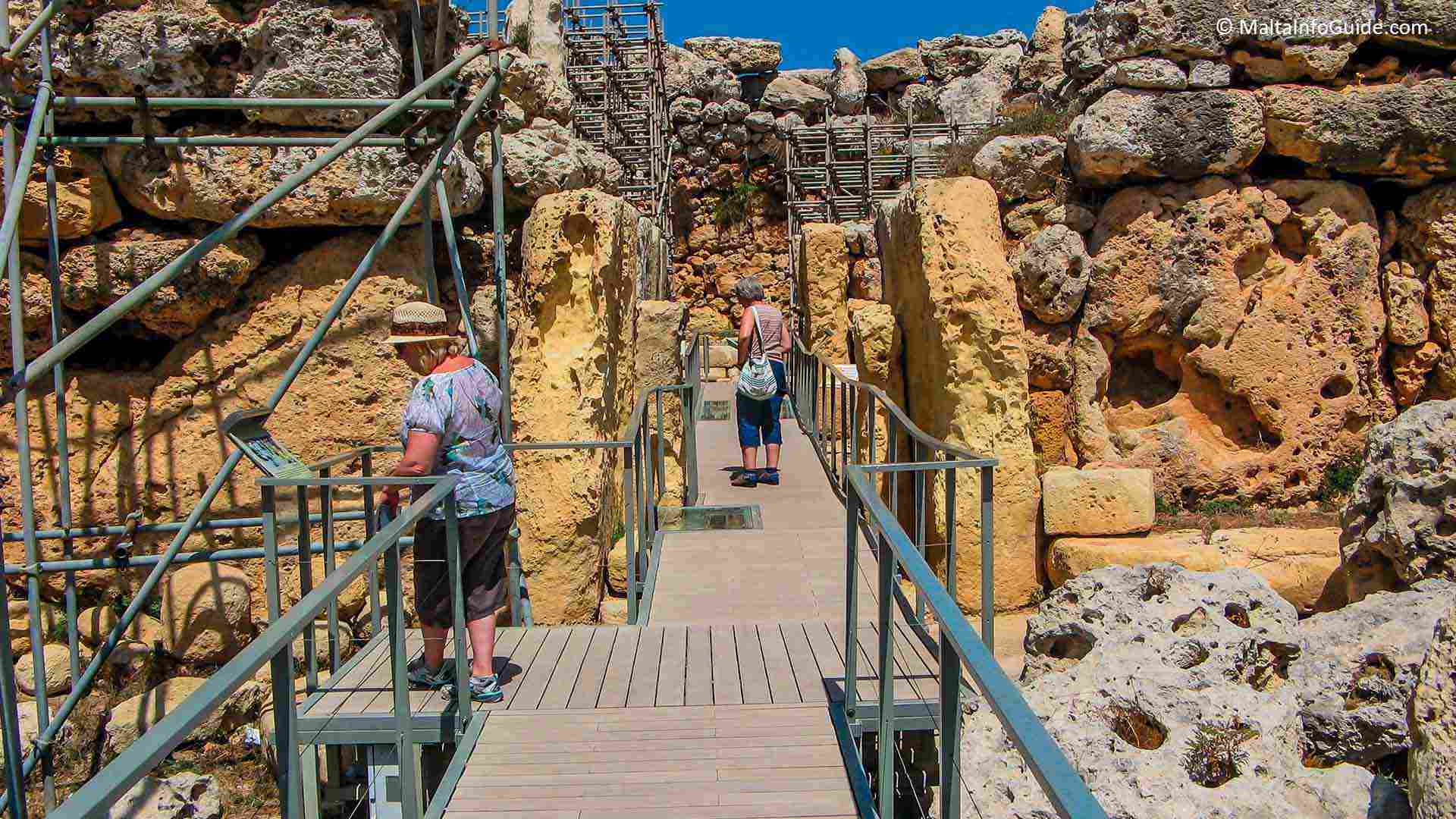
Walk a while backwards when the Ggantija temples were built, not a few years but much more than you think. These are the earliest you can find on the islands built during the fourth millennium BC, they are older than the pyramids of Egypt. This is an incredible location surely not to be missed. At the south corner of the temple you can still find it standing at 7 metres high after so many years.
All this you can see if you visit. It is not a mass of stones but so much to learn and you can get so much insight by visiting the visitors centre.
The name Ggantija comes from the Maltese word that translates to giants. This is what the local people used and still call it. This is all due to the massive stones that are found here weighing up to 20 Tonnes. The plan is vaguely comparable to the outline of an obese human form.
facts about ggantija temples
- Older than the Stonehenge England and Pyramids of Egypt by a thousand (1,000) years.
- Included as one of UNESCO World Heritage List .
5. Skorba Temples
Date: 4500 – 4100 bc.
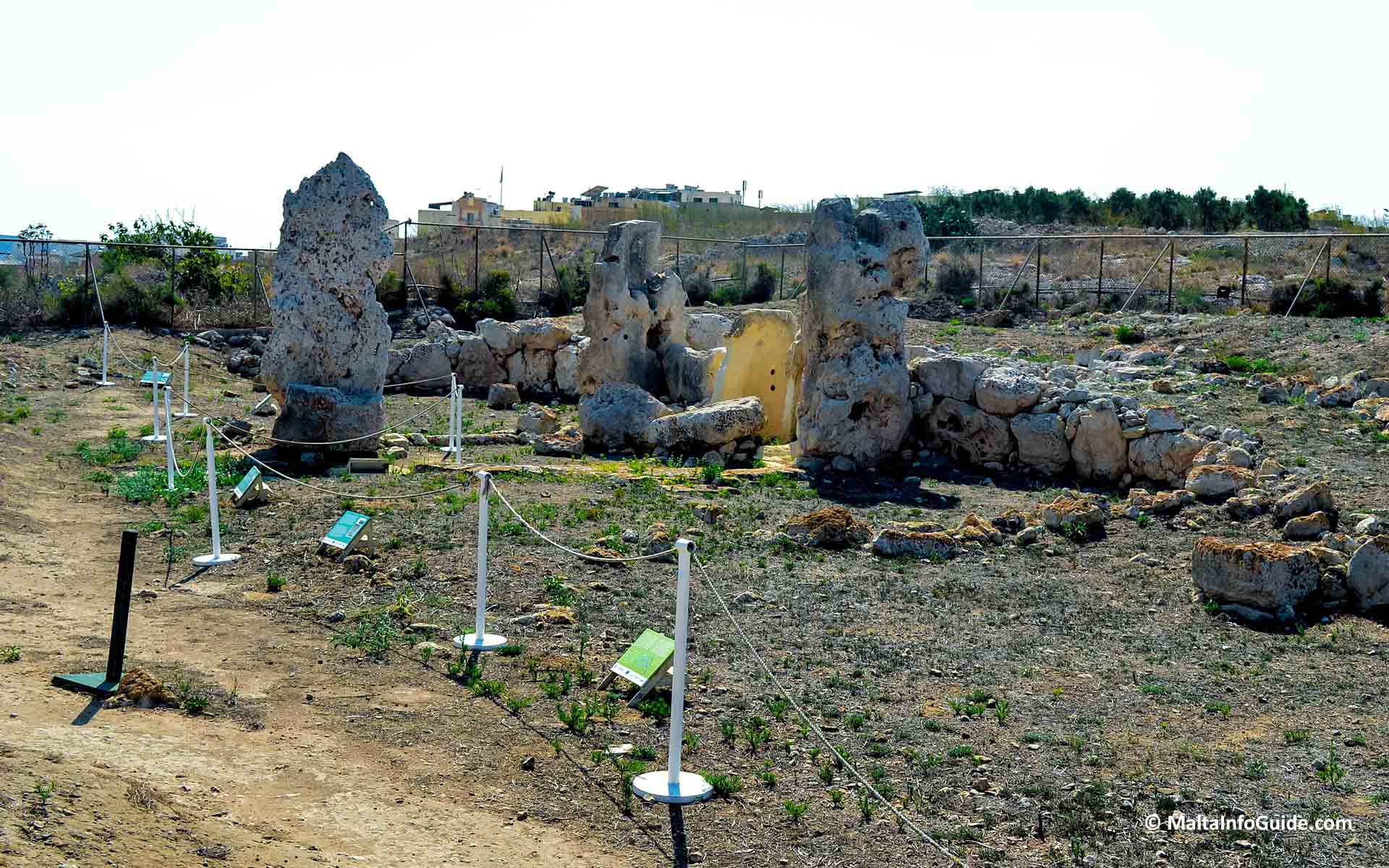
The Skorba temples located around one kilometre outside the village of Mgarr. It is difficult to think how important these sites were for the people who lived here so long ago and who themselves built them with such an accuracy and so much sacrifice. Today they are much in ruin after all these thousands of years. If we just think how much we care for our homes much the same these people were for their temples.
Today they are not in a good condition compared to the others on the island but several findings shed interesting information about Malta’s Neolithic culture.
6. Ta' Hagrat Temples
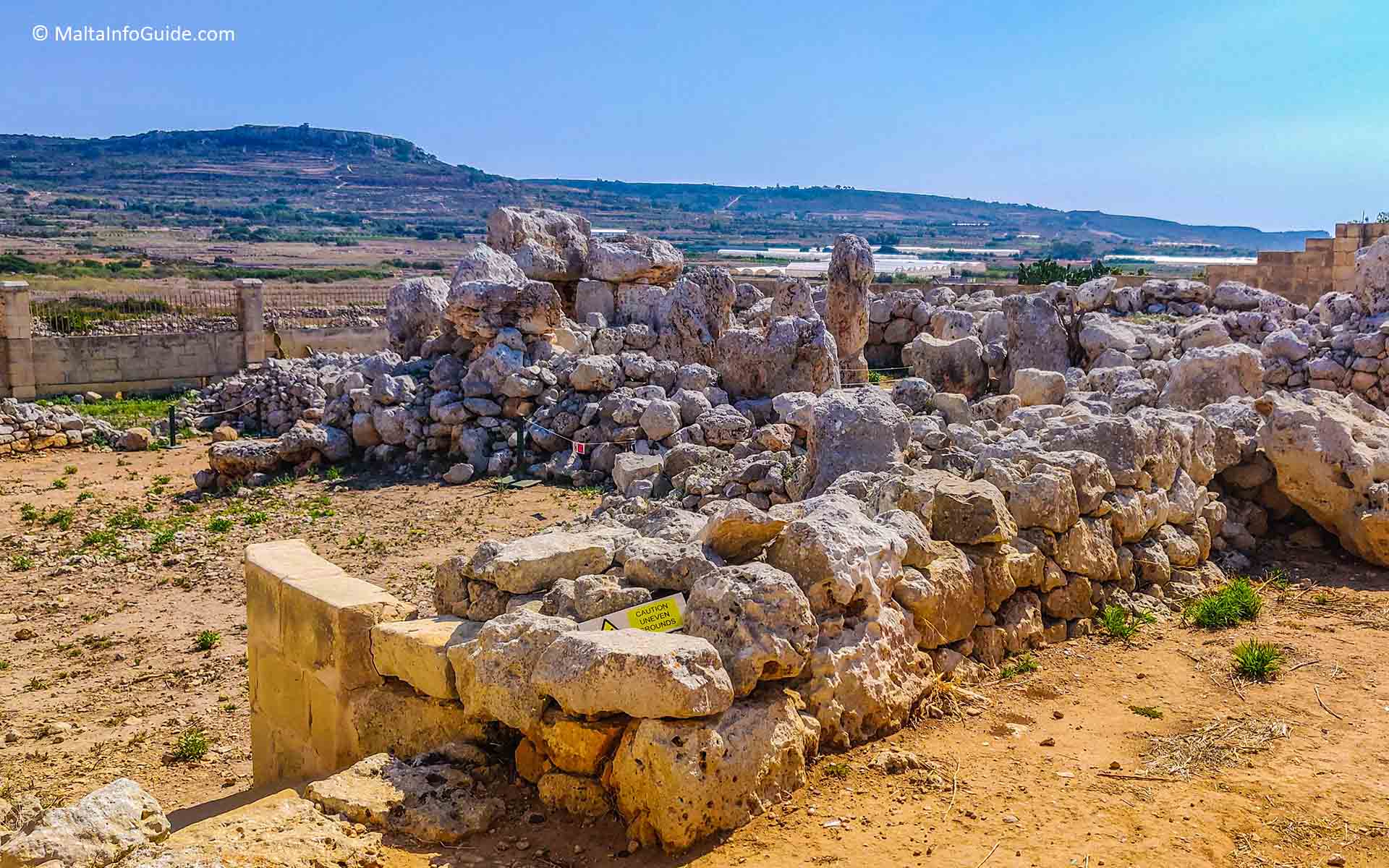
The Ta´ Hagrat temple complex is located in a very quiet area on the islands, around the village of Mgarr where you find farmers tilting their fields. A triple visit to see these temples and the others close by the Skorba temples and the small village.
It consists of two Megalitic temples. The smaller one touches the bigger one on the north side.
It is known that the temples were constructed on an older site which dates from 4,100 - 3,800 BCE. The site was excavated in 1923 by Sir Temi Zammit and once more between 1925 and 1927 with the direction of G.G. Sinclair. During 1937 all the site was rehabilitated.
facts about Ta' Hagret temples
- Many deposits of pottery were found which shows that there was a village on this site which is dated to 3800 – 3600 BC.
- The most interesting find was a small model of a temple
- It is one of the smaller temple complexes on the islands.
map of all 6 megalithic temples of malta
All the following sites are protected under Heritage Malta .
Enjoy this page? Share It On Social Media!
Want to rent a car in malta.
We have used Discover Cars every time we rented a car. We highly recommend them due to their good service and good prices.
Get The Best Rates On Your Car Rental Now!
need to book a hotel for your malta visit?
Using Booking.com, enter your travel dates and number of occupants then rates will be available for hotels and apartments during your visit to Malta
Book Your Hotel In Malta on Booking.com for the Best Rates!

our new travel site
We've just unveiled a fresh London-focused website. Click here to explore it!

UNESCO malta
- Borg In-Nadur
- Hypogeum in Malta Tour
- The History of Hypogeum
- Neolithic Man
- Malta History Timeline

Recent Articles
Explore Malta Summer Music Festivals | Dates, Lineups, and Venues
May 04, 24 03:08 AM
Isle of MTV Malta Festival 2024 | 16th July | Lineup, Dates & Tips
May 01, 24 06:48 AM
Activities In Malta January 2025 | Festivals, Events & Attractions
Jan 04, 24 02:59 PM
Activities in Malta October 2024 | Events & Local Attractions to enjoy
Oct 10, 23 12:42 PM
4 Days In Malta Itinerary | How to Make the Most of Your Holiday
Jun 10, 23 09:46 AM
About Us | Privacy Policy | Disclaimer | Affiliate Disclosure | Contact Us | Site Map
find us on social media
Copyright © 2012 - 2024 MaltaInfoGuide.com | All Rights Reserved
All Content and Photos are Original © MaltaInfoGuide
Don't miss out! Have You Booked Your Accommodation Yet?
Plan ahead and reserve your accommodation early to avoid missing out!
Unlock a world of accommodation choices on Booking.com


Home » Malta's rich history » Malta's Megalithic temples
Uncovering Malta’s Megalithic Temples (including map)
Apart from the Knights of St. John, Malta is synonymous with one other very important period in human history: the Neolithic period. The temples scattered around the Maltese islands are unique and some are considered to be the oldest freestanding structures in the world.

Buy a Malta Pass combo ticket and save big on entrance fees. Hop-on / hop-off transport (bus/boat) included!
The Ġgantija and Skorba temples, for example, are over 1,000 years older than Stonehenge or the pyramids of Giza in Egypt. A great number of these prehistoric sites are listed on the UNESCO World Heritage Site list .
I have selected a handful of sites that are available for visits. Take a closer look at what each site has to offer and what makes each one so unique:
- Ħal Saflieni Hypogeum
- Tarxien Temples
The above are only a fraction of the Megalithic heritage of the Maltese islands. There are many more sites that are either too small or not yet open to the public such as the Tas-Silġ complex and Kordin temples in Malta and Ta’ Marżiena, Borġ l-Imramma, Xagħra Stone Circle and Santa Verna temple in Gozo .

Tickets and tours to Malta’s Megalithic Temples
- Buy a Multipass to visit most of Malta’s Megalithic temples and museums and save on your sightseeing tickets. You can also buy a Multipass with hop-on-hop-off (land and sea) included .
- Take a half-day or full-day tour to the best-preserved temples in Malta.
Why should you visit these Megalithic remnants?
The main experience I get when I visit these sacred places is a spiritual one. I feel I can connect to these structures, many of which are set in amazing locations, such as Ħaġar Qim and Mnajdra on the South coast overlooking the tiny islet of Filfla.
These sites also give us a lot of insight into populations that lived within these tiny islands nearly 6,000 years ago, about their beliefs, their burial rituals and sacrifices they made to nameless deities. They also raise a million questions about those same ancient inhabitants, and you feel the pull to delve deeper into the mystery that shrouds these sites.
And for those still curious about Malta’s Megalithic past, one should definitely plan a trip to the National Museum of Archeology in Valletta where a number of very important items were found at the prehistoric sites during excavations are on display.
If you’re into history and planning a trip of at least 4-5 days or a week in Malta , I highly recommend you pay at least one of the temples a visit.
How to visit the Temples
Although you can easily reach the individual temples by bus or by car, you can also take a tour that takes you to some of the bigger temples and includes transport to/from your place of stay.
This half-day Malta Prehistoric Temple Tour takes you to:
- Ħaġar Qim Temples
- Mnajdra Temples
- Għar Dalam Cave
Looking for tours and excursions in Malta and Gozo?
Get my recommendations on the best day trips, boat trips, excursions and activities and book in advance!

How were the temples built?
A topic that has caused much debate and created also a lot of theories is definitely how our prehistoric ancestors managed to build such amazing and complex structures without the aid of any technology. Some stone blocks are reputed to weigh over 20 tonnes, there are temples perfectly aligned with the rising of the sun on specific days of the year, and others are aligned with constellations barely visible to the naked eye.
So how did they do it?
Archaeologists have racked their brains to discover how the stones were moved and erected, and scientists have tried reconstructing the temples using modern computer technologies. Yet a lot of mystery still surrounds these ancient structures.
What we know for sure is that the temple builders were a patient bunch and didn’t shy away from massive tasks. Considering that what they constructed has stood the test of time, it’s safe to say they were masters in their craft.
The Malta Atlantis Theory
The large concentration of megalithic temples, mysterious remains and peculiar artefacts found around the Maltese archipelago has given rise to many theories about the temple builders. Could Malta have been the elusive Atlantis in Plato’s writings? A study conducted by Anton Mifsud in his book Malta: Echoes Of Plato’s Island surely supports this theory as does a 2002 book by Francis Galea called ‘Malta Fdal Atlantis’ (Malta remains of Atlantis).
A number of important documentaries that investigate this theory have been filmed in Malta in recent years by National Geographic, Discovery Channel and other important companies.
Important findings, such as the elongated skulls excavated from the Hypogeum of Ħal Saflieni indicate how the ancient temple builders had very different features and characteristics than other populations that inhabited the Mediterranean coasts in that era. Their knowledge of astronomy and construction still baffles scientists. It is also generally agreed that at some point in time, the temple builders vanished completely from these islands, abandoning their beloved temples and dwellings.
Why did they leave? What happened to them? Where did they go?
Why don’t you put on your Indiana Jones hat and try your hand at making the connection?
Where are the Megalithic Temples of Malta located?
Take a look at the map to find out where each temple is located:
Sneak peek videos of Malta’s temples
Perhaps, if you’re still thinking about whether to visit these incredible monuments from a distant past, you should take a peek at the following videos that reveal a little about what to expect.
Get the best travel tips from Malta Uncovered delivered to you in bite-sized chunks by email. (Unsubscribe at any time!)
Was this article helpful? Share it with your friends!
Leave a Reply Cancel reply
Your email address will not be published. Required fields are marked *
Yes, I would like to receive emails from you with Malta travel tips.

Get the most out of your visit to Malta with Malta Uncovered guidebooks – full of local knowledge and up-to-date for 2024 !
© 2006-2024 Malta Uncovered. All Rights Reserved.

Going To Malta? Visit The Prehistoric Megalithic Temples

Your changes have been saved
Email Is sent
Please verify your email address.
You’ve reached your account maximum for followed topics.
Forget Denver And Visit This Underrated Alternative
7 strangest things ever found in zion national park, this is the smartest state in the us, quick links, the megalithic temples of malta - older than the pyramids, notable megalithic temples of malta, tours of malta's megalithic temples.
Malta is a small Mediterranean island country between Italy and Tunisia, but it boasts an impressive prehistoric history. Malta is home to several prehistoric temples - some of which are UNESCO listed. They are so old, that some had claimed they were the oldest freestanding structures in the world until the discovery of Gobekli Tepe and other surrounding sites (that's also a fully-developed attraction).
Malta is one of the stunning attractions and places to visit in the Mediterranean Sea - famous for its stunning beaches and more. One can visit it as a destination in the Mediterranean or as part of a larger Mediterranean cruise.
"They rank amongst the earliest free-standing stone buildings in the world and are remarkable for their diversity of form and decoration. Each complex is a unique architectural masterpiece and a witness to an exceptional prehistoric culture..." UNESCO
The Megalithic Temples of Malta were an impressive architectural feat for their time - the builders were still Stone Age without metal tools to use. Aspects of their construction were remarkably sophisticated for their time. Not much is known about these early Maltese people before they disappeared in around 2500 BC.
- UNESCO Listed Maltese Temples: Ġgantija, Ħaġar Qim, Mnajdra, Skorba, Ta’ Ħaġrat, and Tarxien
Each one of these temples is unique, with a different plan and construction technique. They are found on Malta's two main islands, Malta and Gozo. In total, there are around 30 or so known temple complexes on the islands.
- Oldest: Some Of The Oldest Known Free-Standing Structures In The World
It is believed that the Megalithic Temples of Malta were built in three periods between around 3600 BC and 2500 BC. Dating and understanding the phases of activities with these temples is not easy. Later, Bronze Age peoples built their own structures overtop of the older Neolithic temples adding some confusion to archeology (especially before modern dating techniques).
Three Periods Of Temples of Malta:
- Ġgantija Phase: 3600–3200 BC
- Saflieni Phase: 3300–3000 BC
- Tarxien Phase: 3150–2500 BC
Today the Ġgantija temples have been UNESCO listed since 1980, while five other megalithic temple sites were added in 1992.
Related: Göbekli Tepe Dates From the Neolithic Period in Turkey (It's So Old That It Makes The Great Pyramid Look Young)
With 30 or so temples on the islands, there are too many to visit. These are some of the most notable.
Ġgantija Temples:
The temple complex at Ġgantija is said to be the most important of the temples. It is made up of two temples set side by side with a single boundary wall surrounding them. They are the best preserved of the temples as well as being some of the oldest.
- Built: Between 5,600 and 5,200 years ago
- Preservation: Best Preserved
Ħaġar Qim Temples:
The Ħaġar Qim temples are in the Ħaġar Qim and Mnajdra Archaeological Park and were also constructed, unlike the other temples. They are also large and well-preserved.
Mnajdra Temples:
Three temples make up the extraordinary Mnajdra temple complex. They were built at different times, with the oldest being fairly simple and built around 5,600 years ago. The second (called the South Temple) was built around 600 years later and is aligned with the rising sun at the equinoxes and solstices. The third temple was built between 5,000 and 4,500 years ago between the other two. They were likely part of a much large ritual center.
- Temples: 3 Temples
- Built: Between 5,600 and 4,500 years ago
Related: This Malta Fishing Village Is Among The World’s Most Beautiful
There are plenty of guided tours of the Megalithic Temples of Malta. One example half-day tour of the temples includes the Temples of Tarxien, Ghar Dalam or the 'Cave of Darkness,' and the Ġgantija temples of Hagar Qim.
The tour sets out from the capital of Valletta and explores three of the island's most important archeological sites. The tour is ideal for first-time visitors to Malta who would like to get an understanding of the temples and the history behind them.
- Includes: Driver/Guide, Pick up/Drop Off, and Entrance Fees
- Departure: 9.00 am
- Duration: Approx. 4 Hours
- Temples: Ġgantija temples of Hagar Qim & Two Tarxien Temples
One will spend around an hour at each of the important temple sites exploring some of the most important Neolithic temples in the world. The tour also explores the Ghar Dalam Cave and Museum Ghar Dalam. One will see the fossilized remains of prehistoric animals that lived there during the glacial period.

Suggested Tour Itineraries
The tours listed below can be customised to your specifications
Classic Tours
Half day tours.
- Mdina, Hagar Qim Temples & Blue Grotto
- Valletta & Birgu
- Valletta & Mdina
- Landscapes, Villages & Blue Grotto
Full Day Tours
- Valletta, Marsaxlokk Village, Hagar Qim Temples & Mdina
- Fortess Island 'Valletta, Mdina & Birgu'
- Mdina & Central Highlights
- Gozo Island Tour
Night Tours
- Birgu by Night
Multi Day Tours
- 2 Day Discover Malta & Gozo
- 3 Day Discover Malta & Gozo
- 4 Day Discover Malta & Gozo
Special Interest & Themed Tours
Short themed walking tours.
- Valletta Walking Tour 'A Courtesan. A Knight. A Baker'
- Birgu Walking Tour 'An Ancient Maritime Gem'
- Mdina & Rabat Walking Tour 'Medieval & Roman Times'
- Game of Thrones
- Food Culture Tour
- Megalithic Temples of Malta
- Cities of the Knights
- Sacred Island of St. Paul
- Great Siege 1565
- 2 Day Ancient Temples of Malta
- 3 Day Ancient Temples of Malta
- 2 Day Footsteps of St. Paul
- 2 Day Trail of the Knights
- 3 Day Trail of the Knights
Hagar Qim Temples
Tour Description
We will be touring the south of the island during this tour starting at the Blue Grotto. This picturesque grotto and its neighbouring system of sea caverns mirror the brilliant phosphorescent colours of underwater flora. Boat trips, which take around 25 minutes allow you to explore these grottoes and sea caverns along this stretch of coast (the boat trip is not included in the overall price as it operates subject to weather conditions, allow €10). We continue with our tour to the Hagar Qim temple site. Set in a rural area this ancient temple is particularly interesting as it has the largest and heaviest megaliths out of all the temple sites around the Maltese Islands, some slabs weighing a staggering 20 tons. Our guide will unfold the history related to this temple which dates back to 3300BC. Our next stop includes a visit to Marsaxlokk. This quaint fishing village on the south coast is characterized by low lying buildings and the colourful traditional fishing boats known as the 'luzzu'. A small local market lines the seafront and for those that enjoy fresh fish, there are plenty of good quality restaurants to choose from. You will have free time for lunch. In the afternoon we continue with our tour and our first stop includes a visit to Tarxien. Tarxien was the first temple site to be excavated scientifically and it offers a unique collection of circa. 3000 BC sanctuaries. Stone idols and tablets, domestic animals carved in relief, altars and screens decorated with spiral designs and other patterns, oracular chambers and riches enhance the attractions of these temples. Our next stop is at the UNESCO World Heritage Site, Hal Saflieni Hypogeum. This unique ancient underground monument is 12 metres below street level. It consists of a network of passages, chambers and caves cut on three levels, similar to the interior of a megalithic temple. The most impressive part of the temple is the "Holy of Holies" and one of the most important prehistoric masterpieces known as the "Sleeping Lady" was also found here. Our tour continues to Ghar Dalam. The Ghar Dalam Cave is a highly important site as it was here that the earliest evidence of human settlement on Malta dating back 7,000 years, was discovered. This huge cavern is 144 metres deep, but only the first 80 metres are open to visitors. The different layers contained the fossil bones of dwarf elephants, hippopotami, red deer, fox, wolf, micro-mammals and birds which date back to the Pleistocene Age (180,000 years ago) and the end of the last Ice Age(16,000 years ago). Our tour ends here and we make our way back. PLEASE NOTE Full day Megalithic Temples tour is not available during July & August due to the intense heat. A half day/4 hour is possible mornings only.
Prices & Details:
Prices are based on the group size and are not per person. The size of transport is provided based on the number of passengers in your party. 2024 Tour Prices Includes private transport with driver and guiding services: eur462 for 1 to 3 passengers eur638 for 3 to 6 passengers eur804 for 7 to 9 passengers eur969 for 10 to 12 passengers eur1,135 for 13 to 16 passengers Contact me for a larger group of 17 to 50+ LOW Season Discounts If you are visiting between December 1 and 22 or January 5 and March 7 a discount is available on this tour. For 2025/26 rates and bookings send an enquiry via the How to Book/Make an Enquiry form below. Not Included Hypogeum - This site requires an advanced reservation. Tickets range from eur20 to eur35 per person. Details will be provided. Other entrance fees - To save unnecessary time-wasting and queuing we can include your entrance fees. Allow eur19 per person for Hagar Qim, Ghar Dalam & Tarxien Temples. Blue Grotto - if you would like to do the Blue Grotto caves boat trip (recommended), allow eur10 per person. The cost of lunch is not included in the tour rate, however free time for a lunch break will be allocated. How to Book To book, click on How to Book/Make an Enquiry below, complete the form and send. I normally reply within 48 hours confirming my availability. You can check Confirming, Payment & Cancellation Policy here
© 2013 - 2024 Joan Sheridan Freelance Tour Guide. All rights reserved.

IMAGES
VIDEO
COMMENTS
A spectacular prehistoric site on a 4 Hours private tour to Ghar Dalam Cave and Museum, Tarxien Temples, Hagar Qim Temples…. Free cancellation. from. $253. per group. 10. Private Prehistoric Temples and Blue Grotto Tour in Malta. Historical Tours. 4 hours.
The Tarxien Temples are open daily for visitors between 9 AM to 5 PM, with last admission at 4:30 PM. It is recommended to arrive earlier in the day to avoid larger tour groups and afternoon heat during the summer. Peak days tend to be Wednesdays when many local students visit and weekends when more leisure tourists come.
A complex of four megalithic temples makes up The Tarxien Temples site, which is located in the heart of the village of Tarxien. Its location is around 400metres to the east of the Hypogeum of Ħal-Saflieni, another one of Malta's famous temples.. Built between 3600 and 2500 BC, this complex is the largest prehistoric site on the islands and is now a UNESCO World Heritage Site.
A: Tarxien Temples (It-Tempji ta' Hal Tarxien) hours of operation: Open daily from 9am to 5pm. Buy tickets in advance on Viator. If you book with Viator, you can cancel at least 24 hours before the start date of your tour for a full refund. Book tours and tickets to experience Tarxien Temples (It-Tempji ta' Hal Tarxien).
The lower part of a colossal statue of a figure wearing a pleated skirt stands sentinel to the dawn of civilization in the highly decorated South Temple within the Tarxien Neolithic Complex site. Discovered in 1913 by farmer Lorenzo Despott, the site consists of a complex of four megalithic structures built in the late Neolithic and then ...
Tarxien Temples. 698 reviews. #1 of 2 things to do in Tarxien. Historic SitesAncient Ruins. Closed now. 10:00 AM - 6:00 PM. Write a review. About. Inscribed in the UNESCO World Heritage List, this site consists of a complex of four megalithic structures built between 3600 and 2500 BC, and re-used between 2400 and 1500 BC.
Tarxien Temples (It-Tempji ta' Hal Tarxien) hours of operation: Open daily from 9am to 5pm. Buy tickets in advance on Viator. If you book with Viator, you can cancel at least 24 hours before the start date of your tour for a full refund. Find and book tours and tickets to Tarxien Temples (It-Tempji ta' Hal Tarxien).
Book the most popular Tours in Tarxien Temples. Best price and money back guarantee! Read the reviews of your fellow travelers.
Malta's Megalithic Temples are among the oldest in the world, dating back as early as 3600 BC and protected as a UNESCO World Heritage site. This half-day tour from Valletta visits three of the island's most important archeological sites—the Temples of Tarxien, Ghar Dalam or the 'Cave of Darkness', and the Ġgantija temples of Hagar Qim.
Book your Tarxien Temples tickets online and skip-the-line! Save time and money with our best price guarantee make the most of your visit to Malta!
The Megalithic Temples of Tarxien are dated back to 3000 BC. The temples are Malta's most important antiquities and are considered to be unique in the world. Ghar Dalam is the 'cave of darkness' and its fossilized remains of prehistoric animals of the glacial period. This experience requires a minimum number of travelers.
The service offered by Malta Sightseeing is not as extensive, but it does include the Hypogeum as well as the Hagar Qim & Mnajdra temples, but not the Tarxien temples. Gozo - there are two services: City Sightseeing Gozo and Gozo Sightseeing. Both stop at the Ggantija temple. The first, the one I used, is the cheapest.
Tarxien Temples entry ticket. Return transport by coach. €25. Three Cities & Tarxien Temples. It is said of Malta that it has more history per square kilometres than any place in the world. Well the Three Cities of Vittoriosa, Senglea and Cospicua can claim the same per square metre. It is staggering just how much there is to see in this area ...
Tarxien This is another of the great works discovered by archeologists in Malta. Tarxien is a complex of 4 temples, of which the first one dates from the Ggantija period, so it is observed with some damage to its structure. The other temples that make up Tarxien belong to the year 3000 and 2500 B.C. Therefore, they are better preserved.
Visit Hagar Qim and Mnejidra, the largest Megalithic temples of the Maltese islands. See Ghar Dalam, an old mortar cave which dates back 7,000 years. Explore the mysterious temple of Tarxien. Take advantage of a private multilingual tour guide. Enjoy stunning views of the Southern Malta cliffs from the majestic Manjinder Temple.
Save time & money by comparing rates. Discover the Tarxien Temples, megalithic temples which date back to 3150 BCE and which feature carvings of animals. Along with Malta's other temples, the Tarxien Temples form part of a UNESCO World Heritage Site, and it's worth taking a guided tour to learn all about the island's prehistoric culture.
The temples are located in the town of Tarxien, just south of Valletta. The best travel option is to take a public bus from Valletta's main terminal—bus numbers 1, 82, 84, 88, and 93 stop nearby. Otherwise, make the 30-minute or so journey from the capital by cab or self-drive car. If the latter, take Route 6 from Valletta before following ...
6. Ta' Hagrat Temples. Date 3600 - 3200 BC. The Ta´ Hagrat temple complex is located in a very quiet area on the islands, around the village of Mgarr where you find farmers tilting their fields. A triple visit to see these temples and the others close by the Skorba temples and the small village.
Mnajdra. Skorba. Ta' Ħaġrat. Tarxien Temples. The above are only a fraction of the Megalithic heritage of the Maltese islands. There are many more sites that are either too small or not yet open to the public such as the Tas-Silġ complex and Kordin temples in Malta and Ta' Marżiena, Borġ l-Imramma, Xagħra Stone Circle and Santa Verna ...
Tours Of Malta's Megalithic Temples. There are plenty of guided tours of the Megalithic Temples of Malta. One example half-day tour of the temples includes the Temples of Tarxien, Ghar Dalam or the 'Cave of Darkness,' and the Ġgantija temples of Hagar Qim. The tour sets out from the capital of Valletta and explores three of the island's most ...
Malta is known for its wealth of mysterious, Megalithic temples—and this private, half-day tour offers the easiest and most hassle-free way to discover these UNESCO-listed wonders. In the morning, meet your guide and driver directly at your accommodation, and travel in comfort aboard your own private vehicle. In the space of just half a day, you'll visit the Tarxien Temple, Hagar Qim and ...
Tarxien was the first temple site to be excavated scientifically and it offers a unique collection of circa. 3000 BC sanctuaries. Stone idols and tablets, domestic animals carved in relief, altars and screens decorated with spiral designs and other patterns, oracular chambers and riches enhance the attractions of these temples.
The Tarxien Temples ( Maltese: It-Tempji ta' Ħal Tarxien, Maltese pronunciation: [tɐrˈʃɪːn]) are an archaeological complex in Tarxien, in the Port region of Malta. They date to approximately 3150 BC. [1] The site was accepted as a UNESCO World Heritage Site in 1992 along with the other Megalithic temples on the island of Malta.